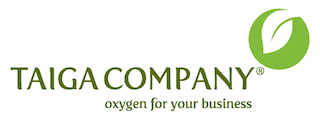How To Build A Sustainable Company Structure

Sustainability has become a critical factor in business success in recent years. Consumers are increasingly interested in products and services that have a minimal environmental impact, and companies that can demonstrate their commitment to sustainability
are more likely to be successful in the long run. There are many ways to build a sustainable company structure, but the following tips are a good place to start.
1) Establish Clear Environmental And Social Policies
One of the best ways to create a sustainable company is to establish clear environmental and social policies . These policies should be based on your company’s values and should reflect your commitment to sustainability. They should also be transparent so that consumers can easily understand what you stand for.
Establishing clear environmental and social policies will help you make better decisions when it comes to running your business. For example, if you have a policy against using certain materials or processes, you’ll be less likely to use them even if they are more cost-effective. And if you have a policy in place that encourages recycling, you’ll be more likely to recycle products and materials instead of throwing them away.
2) Implement Efficient Processes And Systems
In order to be sustainable, a company must operate efficiently and use resources wisely. This means implementing efficient processes and systems that reduce waste and conserve energy. It also means choosing environmentally friendly materials and technologies whenever possible.
Implementing efficient processes and systems can be difficult, but it’s worth the effort. Not only will you save money in the long run, but you’ll also help protect the environment. Some of the best ways to achieve efficiency include using recycled materials, automating tasks wherever possible, and reducing packaging.
3) Make Sustainable Choices When Sourcing Materials And Products
Sourcing materials and products responsibly is another important aspect of sustainability. This means choosing suppliers that share your commitment to environmental and social responsibility, and it also means looking for sustainable alternatives whenever possible.
Making sustainable choices when sourcing materials and products can be difficult, but it’s worth the effort. Not only will you help protect the environment, but you’ll also save money in the long run. Some of the best ways to source materials sustainably include using recycled materials, choosing biodegradable materials , and avoiding excessive packaging.
4) Educate Employees And Consumers About Sustainability
Education is key to creating a sustainable company. Employees need to understand the importance of sustainability and how they can help the company achieve its goals. And consumers need to be aware of the environmental and social impacts of their choices.
Educating employees and consumers about sustainability is essential for creating a sustainable company. Employees need to understand the importance of sustainability and how they can help the company achieve its goals. And consumers need to be aware of the environmental and social impacts of their choices. Some ways to educate employees include holding workshops, posting articles, and setting up intranet pages. Some ways to educate consumers include posting information on your website, issuing press releases, and conducting surveys.
5) Get Some Security
Sustainability is a big word. It encompasses environmental, social, and economic responsibility, which can be daunting for any business to take on board. So it’s important that as you work towards becoming a sustainable company, you have some security in place to protect your business from hazards like Carding .
A good way to achieve this is by setting up sustainability targets. This will give you something to aim for and ensure that your progress is monitored. You can also use environmental management systems (EMS) which will help you track your carbon emissions and energy consumption, among other things.
In conclusion, there are many ways to build a sustainable company structure. By following the tips above, you can create a company that is both environmentally and socially responsible. And by educating employees and consumers about sustainability, you can help them make more informed choices about the products they buy.


